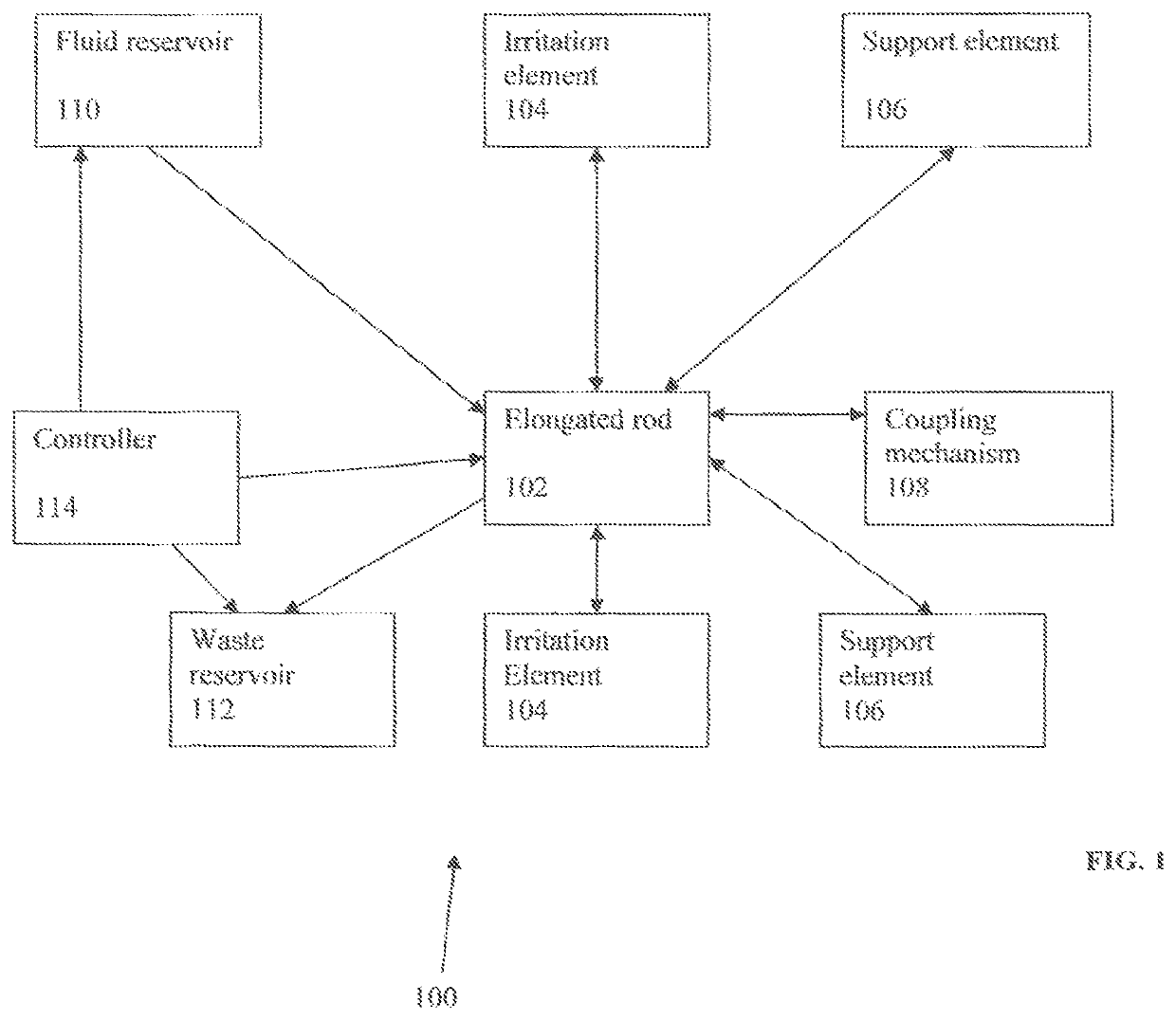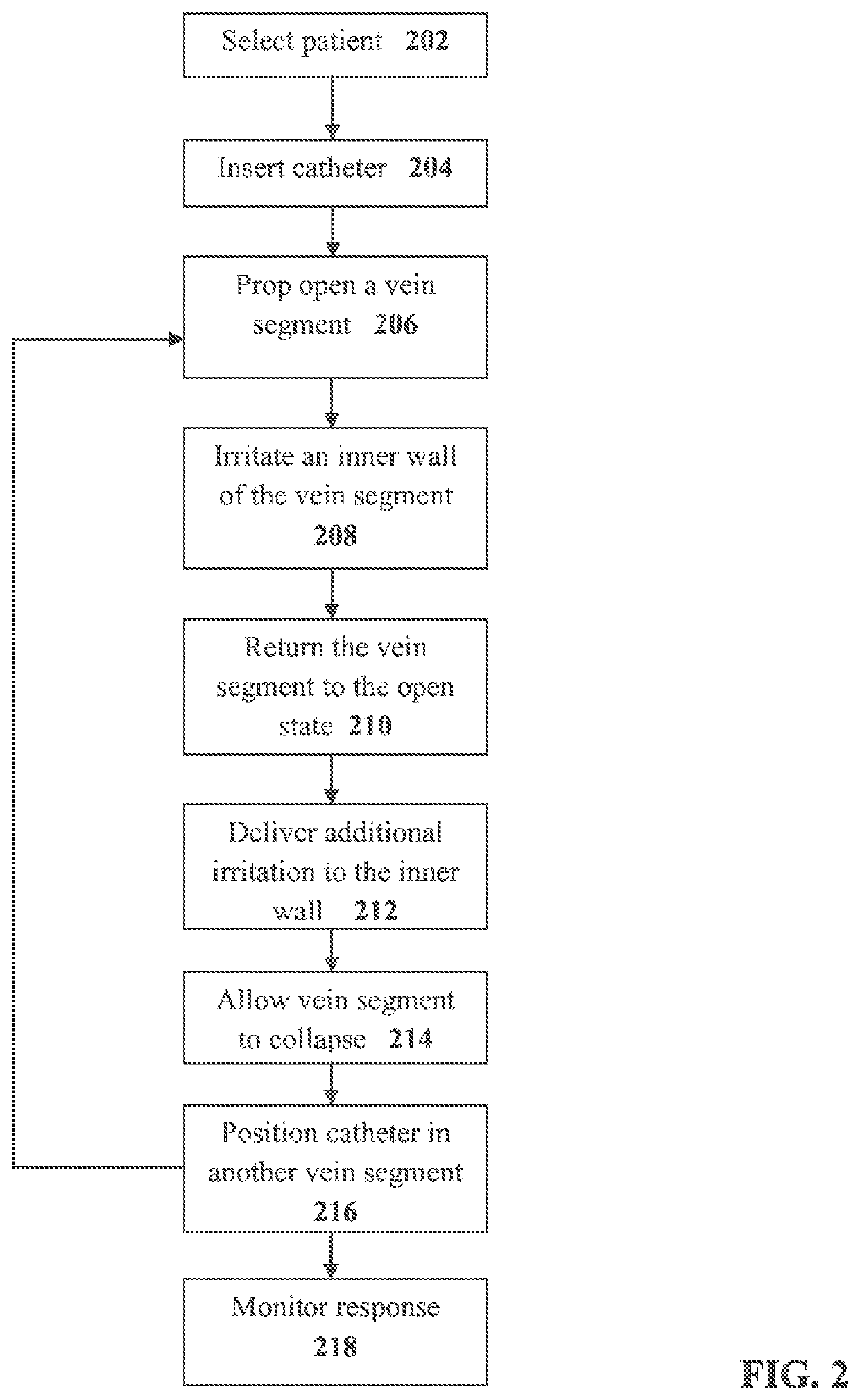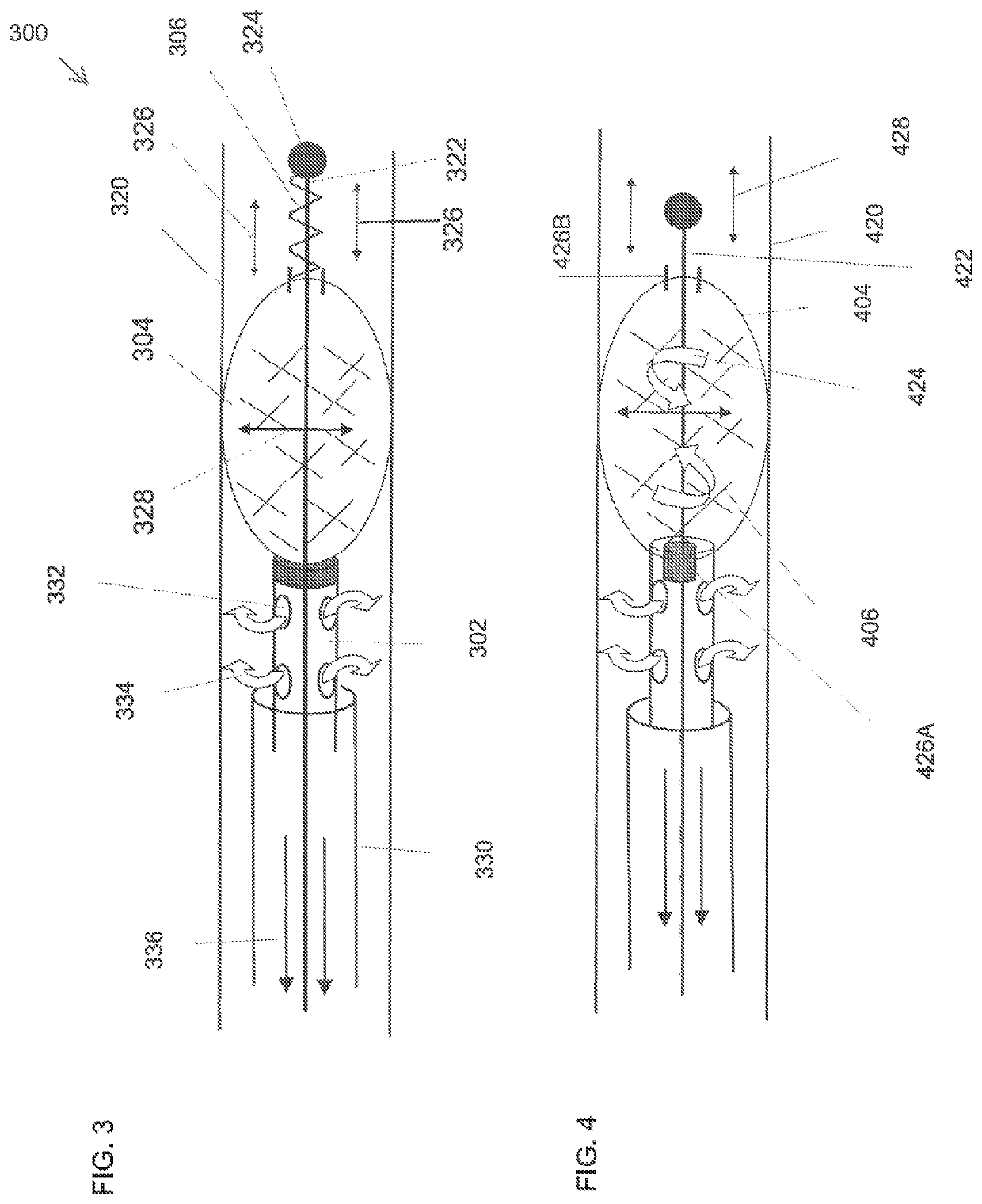Vein ablation device
a vein ablation and vein technology, applied in the field of vein ablation devices, can solve the problems of non-invasive devices, high risk of surgical complications, and the risk of damage to nearby nerves of cather based devices, and achieve the effects of reducing the risk of surgical complications, and reducing the safety of patients
- Summary
- Abstract
- Description
- Claims
- Application Information
AI Technical Summary
Benefits of technology
Problems solved by technology
Method used
Image
Examples
Embodiment Construction
[0056]As used herein, the term “proximal” means closer to the operator of the catheter.
[0057]As used herein, the term “distal” means further away from the operator of the catheter.
[0058]As used herein, the phrase “inner wall” means the inner tissue layer of the vein wall, the intima or endothelial cell layer.
[0059]An aspect of some embodiments of the present invention relates to endovascular catheters and / or methods of use thereof where a catheter comprises an irritation element at a distal end thereof to irritate an inner wall of a vein segment, and a support element at a distal end portion thereof to apply a mechanical force from the distal end portion to iteratively return the irritation element to the expanded irritation state in response to dynamic feedback of vein walls pressing against the irritation element to force the irritation element into the non-irritation state. Optionally, the force applied by the support element returns the irritation element to the irritation state...
PUM
 Login to View More
Login to View More Abstract
Description
Claims
Application Information
 Login to View More
Login to View More - R&D Engineer
- R&D Manager
- IP Professional
- Industry Leading Data Capabilities
- Powerful AI technology
- Patent DNA Extraction
Browse by: Latest US Patents, China's latest patents, Technical Efficacy Thesaurus, Application Domain, Technology Topic, Popular Technical Reports.
© 2024 PatSnap. All rights reserved.Legal|Privacy policy|Modern Slavery Act Transparency Statement|Sitemap|About US| Contact US: help@patsnap.com










